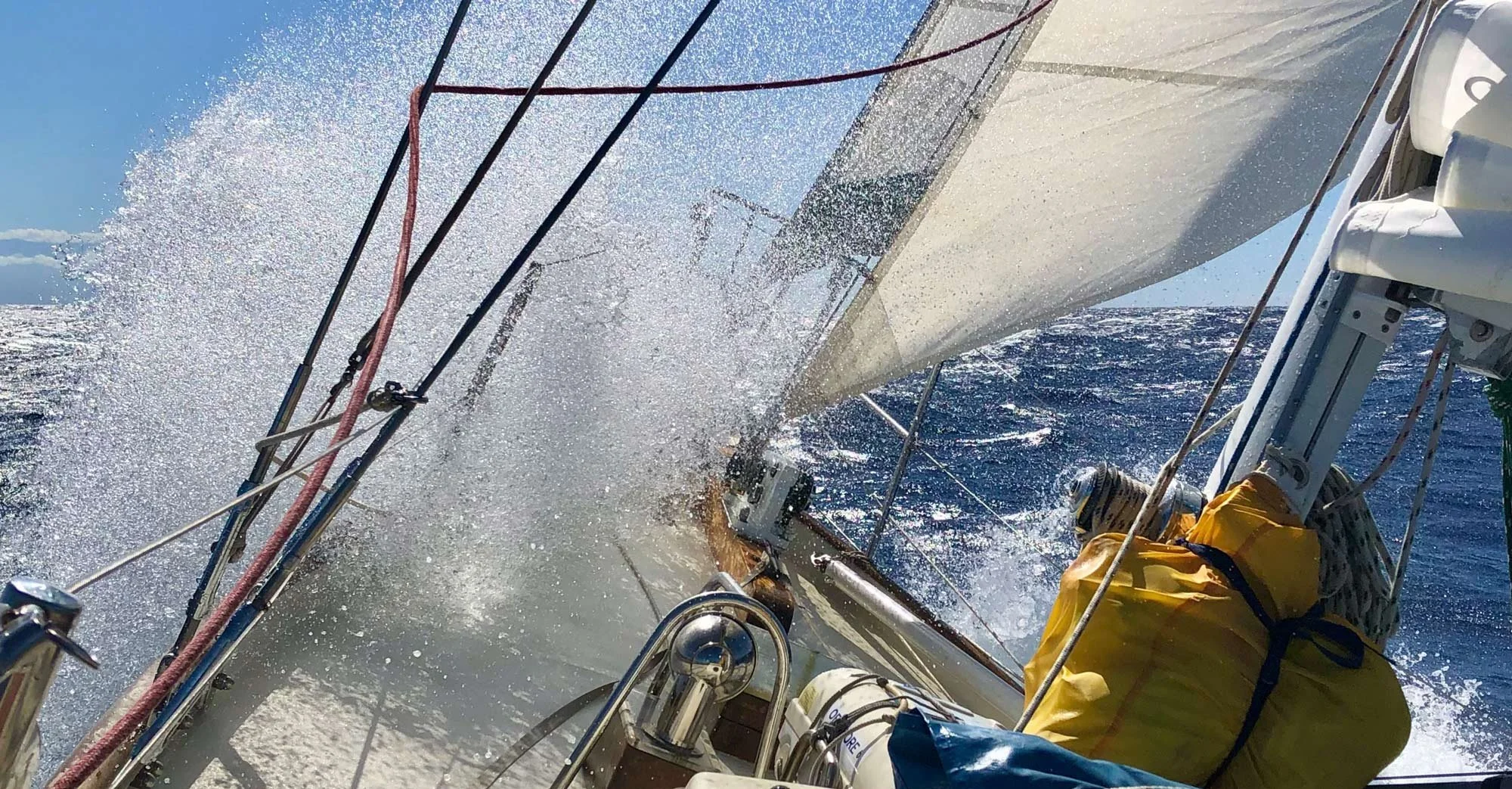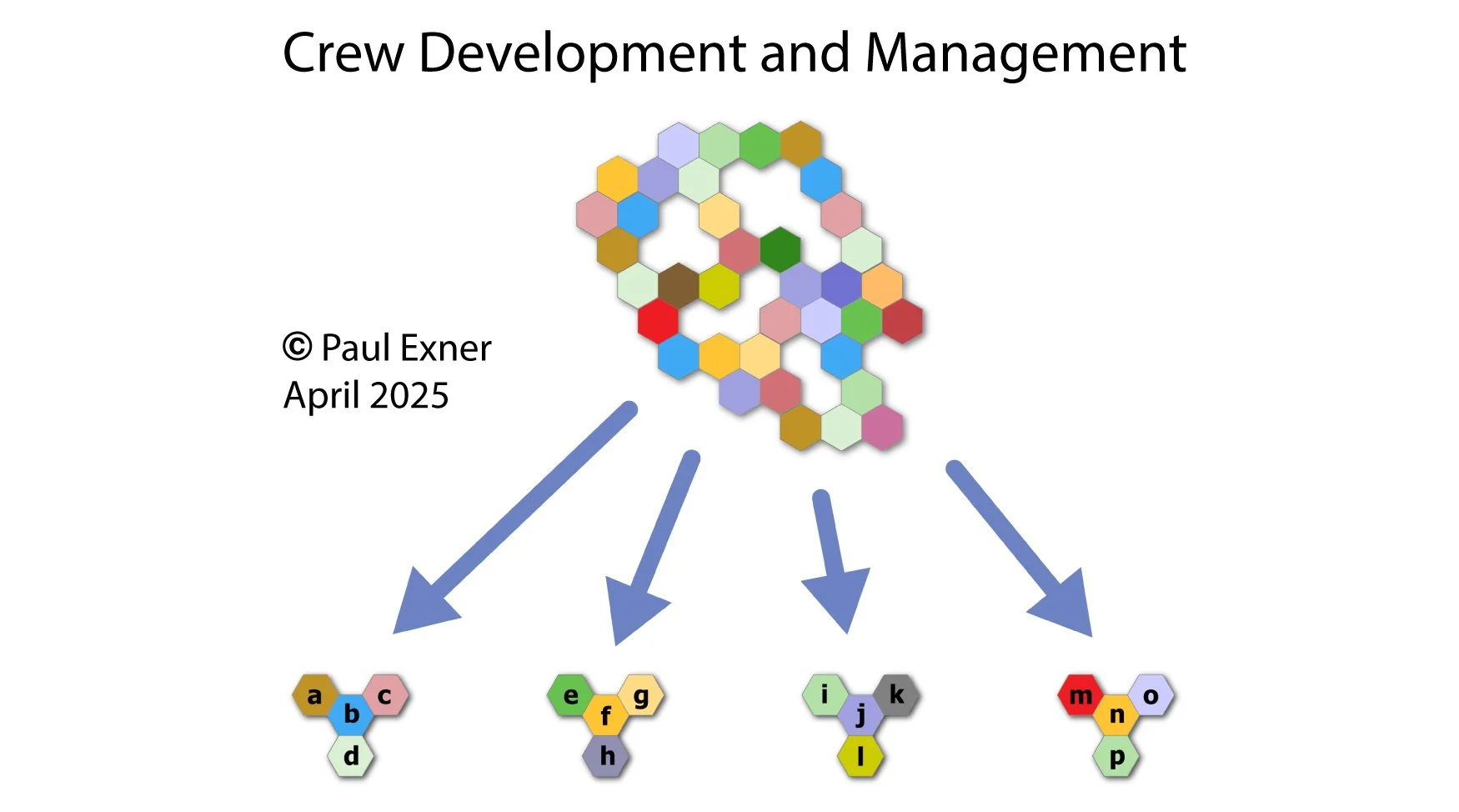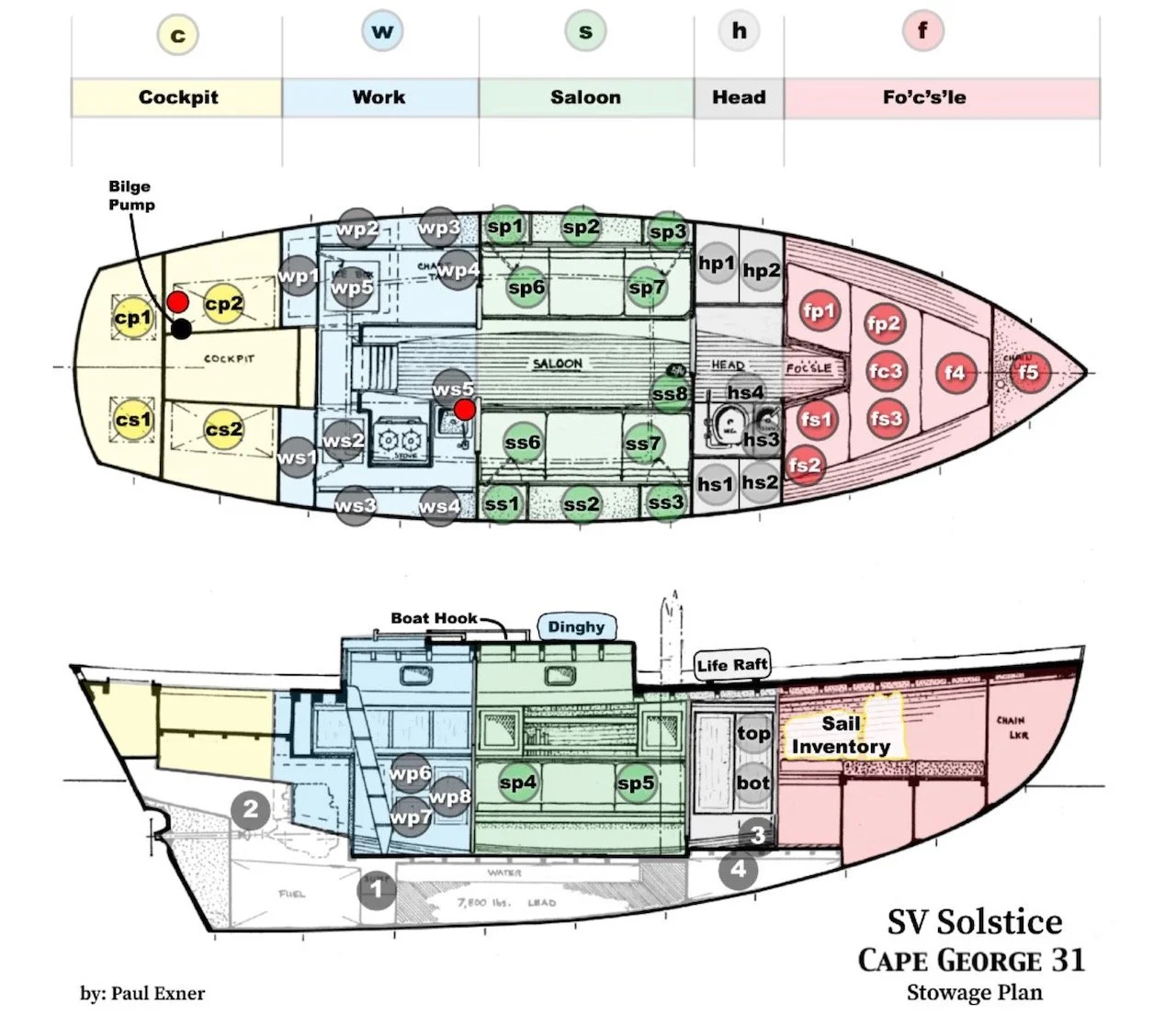Heavy Weather Sail Training — Beyond Certification
Alenuihaha, Hawaii
You don’t get a certificate for this…
Make no mistake, the prep you’ll do before venturing a "go" decision at the doorstep to the Alenuihaha requires a level of readiness you’ve not seen before.
Gales rage in the Alenuihaha — sometimes for weeks… Weather windows are hard to come by.
Extreme wind in the Alenuihaha blows 35-45 knots for 100 miles beyond the Hawaiian island volcanoes that flank the channel — making interisland sailing between Maui and Big Island dangerous.
Captain James Cook dismasted the HMS Resolution’s foremast in the Alenuihaha under Gale conditions in February, 1779 — an event that soon led to his death in a scuffle with Hawaiians on Big Island, where he’d anchored to repair the mast in Kealakekua Bay.
Traversing the Alenuihaha demands a comprehensive seamanship approach — both vessel and crew must be prepped for heavy weather through meticulous planning. This holistic strategy emphasizes expert weather interpretation that includes local meteorological phenomena and synoptic forecasts — and considers the strengths and limitations of the boat’s equipment, as well as the team’s proficiency in operating the boat under the expected conditions.
Total Readiness.
Truth — MOD GEO sailors have crossed and re-crossed the Alenuihaha to challenge themselves like a mountaineer who completes a summit — training beforehand, prepping for the conditions, and strengthening their experience by sailing across and back.
Historically — I’ve aborted 22 attempts to cross the Alenuihaha when lethal conditions prevailed — where contingencies were slim.
To conquer heavy weather — you must “own” the fundamentals of extreme sailing, honed by training rigorously for it, and gained only by taking responsibility for your actions immersed in sea-experience.
In a world of hyped-up advertising where algorithm consumers are stupefied by mind-bending euphoric claims, hear this truth: if someone says they sailed 40-45 knots of breeze tighter than 90° to the wind — they’ve exaggerated or lied; the wind they sailed was not that strong, or they survived by sailing a downwind course.
Any sailor lured overconfidently into extreme conditions does so because their expectations were misguided by another’s bogus claim, or because their ignorance was blinded by pride.
Masterful heavy weather sailing vastly widens a sailor’s opportunities to choose safe tactical solutions or select their course from a wider array of points of sail.
If you run-off downwind in the Alenuihaha Channel, or you imprudently sail where “great billows smash,” you’ve alleviated many options to get home in one piece.
Every winter I teach sailors my comprehensive approach to heavy weather sailing — testing our preparedness in Hawaii's Alenuihaha Channel by attempting a round-trip crossing between Maui and Big Island.
This heavy weather sail-training expedition first builds our skills to a state of Total Readiness in the weeks preceding our departure, then we fully immerse ourselves hands-on in extreme sailing conditions.
After 45 years of sailing in venues around the globe, I have not sailed anywhere less forgiving than the Alenuihaha Channel. Every time I face the Alenuihaha I approach the challenge with the utmost respect for the extreme consequences I could endure if I miscalculate the parameters governing my route.
There’s no certificate given for crossing the Alenuihaha Channel — instead you learn an immeasurable skill: how to use a deep methodology to face heavy weather with realistic expectations, and assess your pre-departure readiness to sail the route you designed.
The allure of the Alenuihaha is to ‘come back’ from there — having handled yourself in conditions that few sailors ever experience with preparedness.
By sailing the Alenuihaha Expedition you’ll “own” a process for making go/no-go decisions — you’ll be equipped with ‘preparedness methods’ that you can draw upon anywhere, thanks to the high-quality training that has ingrained these methods in you.
Expect this result if you make the effort and train with Paul Exner in Hawaii’s Alenuihaha Channel.
Alenuihaha Expedition — Dec. 2023 … TEAM PHOTO: Rick, Mike, Grant, and Paul after their 38 hour round-trip crossing between Big Island and Maui, handling a storm trysail in 40-45 knot winds and 20’ breaking seas for 18 hours during their return-crossing aboard MOD GEO’s SV Solstice.
Sailing the Alenuihaha with MOD GEO means you’ll not downgrade yourself as a “boat-ride-student” aboard a life-style sailing trip that teaches you little. I won’t give you an underwhelming certificate for passing a multiple-choice exam; there’s NO place in the Alenuihaha for bogus on-the-water training.
The Alenuihaha is not a laboratory for adventure-seekers or theorists hoping to dazzle their mates back home with inactionable knowledge plagiarized from Adlard Cole’s book on heavy weather.
By training with MOD GEO you learn how to prepare every aspect of yourself and vessel to build a well-organized offshore sailing team aligned to achieve something that demands serious effort.
Our pre-departure study, homework, and hands-on practice will frame our learning — centered around how we make viable decisions to achieve a common goal: a round-trip crossing of Hawaii's Alenuihaha Channel.
There's a 33% historical chance we can't achieve the summit; extreme weather will make the route too dangerous — but we will work smartly to evaluate all aspects of the endeavor using our formal approach — learning to trust the process no matter if we “go” or not.
MOD GEO has completed 42 crossings of the Alenuihaha since 2018, a level of experience unmatched by any other sailing crew.
The endeavor requires and teaches a professional-level leadership style — avoiding textbook managerialism that is usually misapplied in seamanship contexts. You’ll be taught several effective approaches to prepare vessel and crew for the Alenuihaha, and through your homework, you’ll use these tools to evaluate the team’s readiness at each step.
Paul Exner has invested decades developing specific leadership tools to help sailors advance their core competencies with seamanship. You will work directly with these tools while being coached one-on-one by Paul.
We’ll sail the Alenuihaha with cognition — ingraining the experience — fostering a perspective that enables you to evaluate and pursue any future sailing dream — guaranteed.
This is real-deal level-up coaching, exceeding the depth and rigor of typical graduate level collegiate workshops, mostly because we’ll make appreciable gains with hands-on skills by taking calculated actions at sea rather than limit our discussion to impersonal case study review.
The Alenuihaha sail-training course emphasizes hands-on operation of ocean-capable 30-40 foot sailboats, providing you first-hand experience on a vessel similar in size to your own. It’s important to see exactly how to sail a robustly equipped offshore sailboat, designed with versatility in mind for short-hand operation.
No better sail-training exists.
This training delivers proven results — don’t miss your chance to become a leader of crew, prepared to handle the worst imaginable conditions you’ll eventually face.
Meet your sailing coach: Paul Exner.
Paul Exner created Modern Geographic Sailing in 2005 envisioning a better way for sailors to learn naturally while engaging with their immediate oceanographic surroundings; this became the foundation for a sailor’s growth at MOD GEO — a paradigm of learning that is based on experiences, where hands-on practice is associated with the fundamentals of sailing theory and vessel management — proving more effective than the status quo as a way for students to master the wide range of interconnected skills and knowledge they need to sail a boat and lead a crew on a challenging route.
Paul Exner is a living pioneer of cutting-edge sail-training opportunities and the only senior-level instructor actively using a proven, modernized approach to help sailors excel — his excellence and commitment to the field of sailing education is unrivaled.
Conquer heavy weather.













